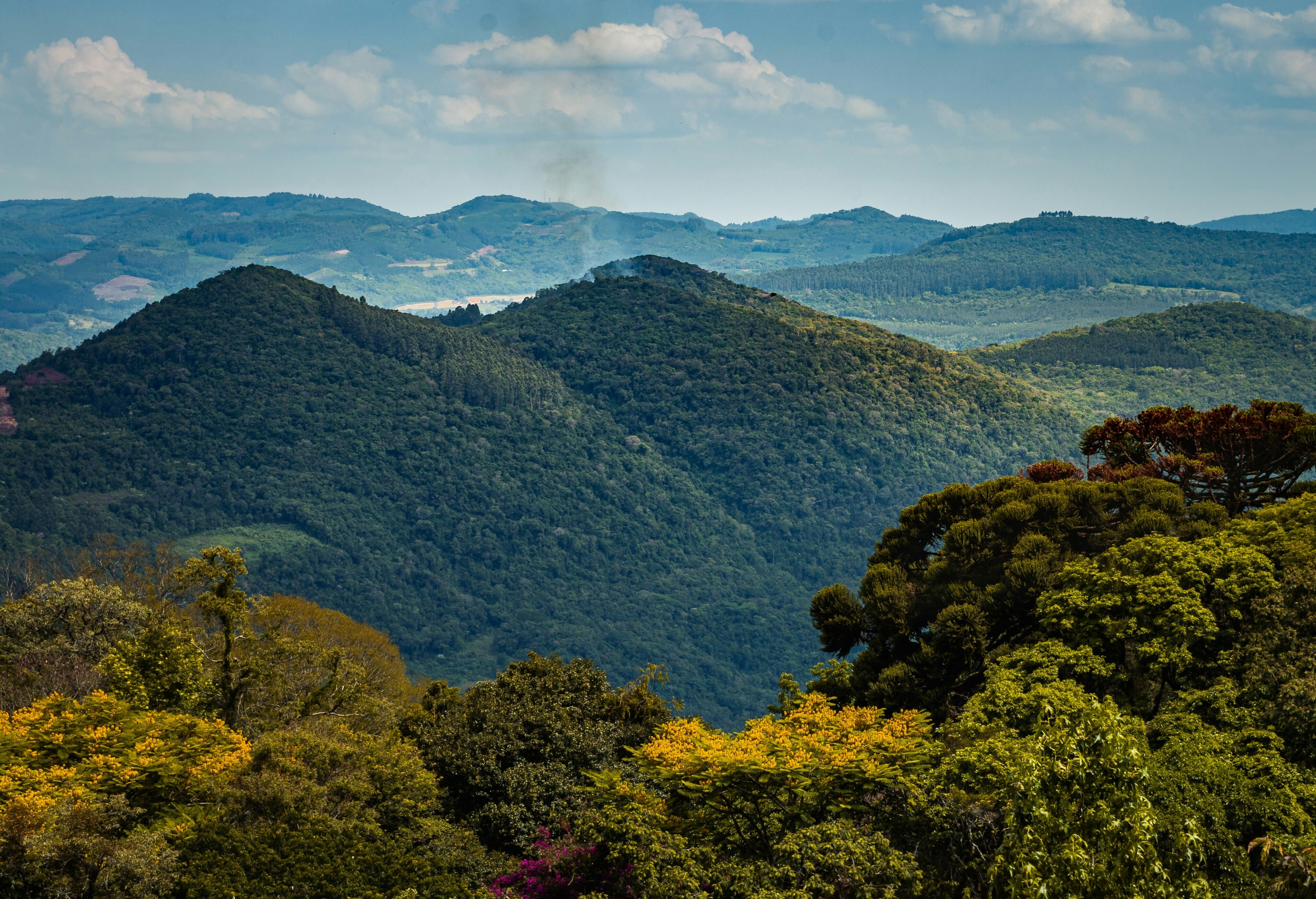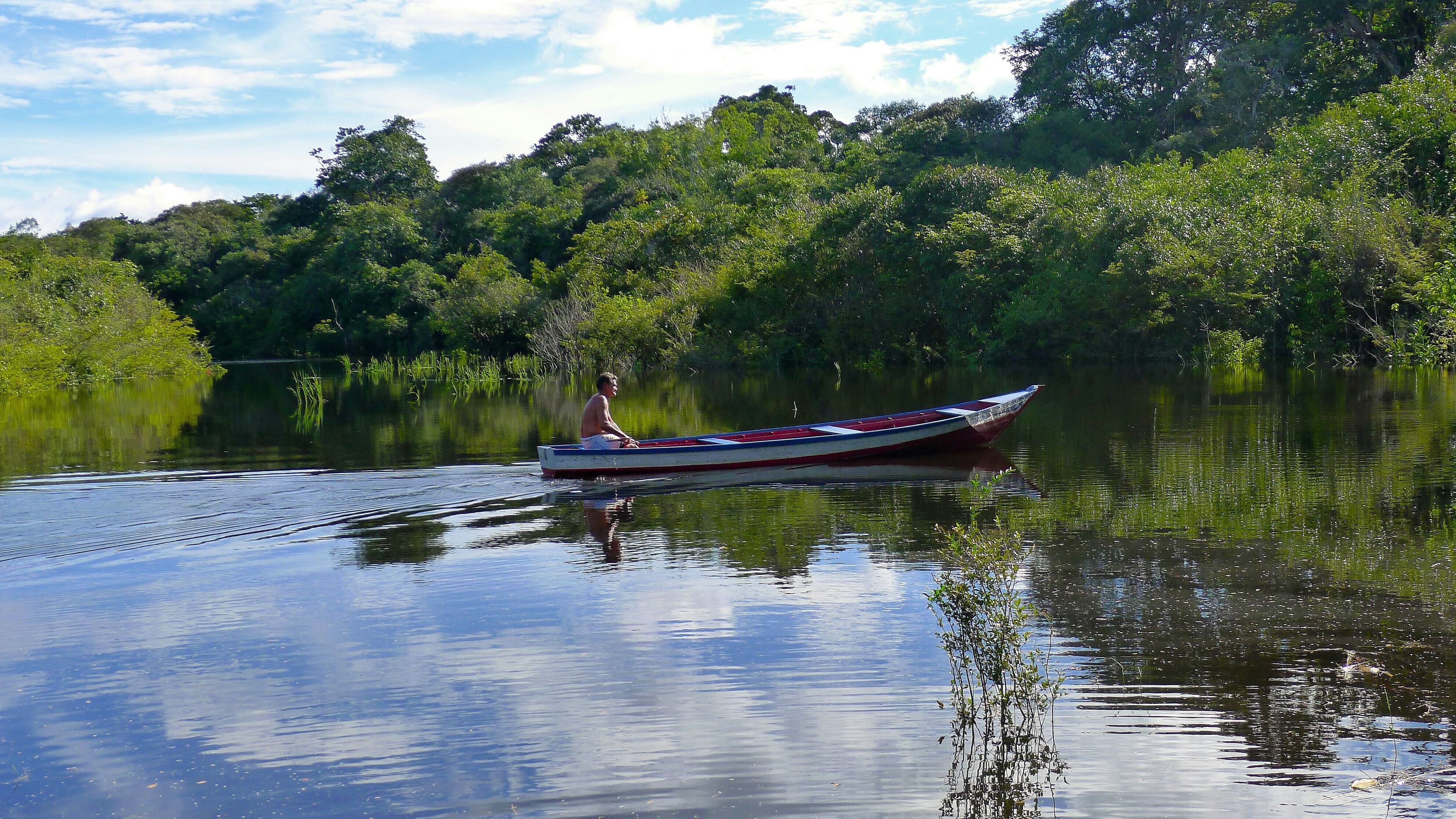Youth movements work. Just look at the Paris Agreement on climate change

The Sundarbans mangrove forest is under threat. Image: REUTERS/Andrew Biraj
The trip to the Sundarbans mangrove forest in south-west Bangladesh was a lively one. “Duck!” we’d yell out to warn those further down the bus roof, each time another electrical wire came dangerously close to our heads. Seconds later, we’d take up the chanting again: Sundarban amar ma. Ujar hote debo na! (Sundarban is my mother. We won’t tolerate her destruction!)
As the exuberant cavalcade headed towards the mangrove forest, our youthful uproars made roadside observers curious in town after town, and they read our flyers describing the dangers of the massive Rampal coal plant being built beside the forest.
The three-day "long march" concluded with a fiery speech by renowned economist and organizer Anu Muhammad, to rally local communities near the Sundarbans. His leadership was instrumental in making the march and the broader resistance, a powerful force.
Wherever you look, such age-diverse partnerships are at the frontline of the climate struggle. Levi and Ridhima are only nine years old but, half a world apart, they are taking the governments of the United States and India, respectively, to court for climate inaction, sparking what could develop into historic legal rulings. They couldn’t have done it alone – climate scientist James Hansen and Ridhima’s activist father have been crucial architects.
And just this week, the People’s Climate Mobilization, marking President Trump’s 100 days in office, made a bold statement against the administration’s dangerous climate denial. It builds on marches in 2014 and 2015 that brought a combined 1.5 million people on the streets in over 2,000 cities worldwide, thanks largely to agile coordination by organisations like 350.org. Co-founded by author-turned-activist Bill McKibben, with some of his students from Middlebury College, 350 has a youthful staff base. It's also good at using the internet to mobilize people more effectively and build power.
The examples above demonstrate three key ways that young people can and are speeding up the response to climate change. The young plaintiffs bring to light a profound moral clarity by highlighting the inter-generational injustice of society’s inaction on climate change.
From the streets of Bangladesh to the halls of power at Paris COP21, youth have channelled that moral clarity with disruptive energy to challenge the status quo and expand the boundaries of dry political feasibilities. Rising movements are employing youth who can drive digital innovation to exponentially improve coordination and generate greater impact.
These factors come together in the fossil fuel divestment movement, the fastest growing such movement in history. Sparked off by college students just six years ago, it has already galvanized over $5 trillion divested. The argument for divestment has a moral core: that endowments of educational institutions should not be used to sabotage their students’ futures. To highlight this, students have occupied presidents’ offices and disrupted the comfort of trustee boardrooms, forcing conversations that were unthinkable just months ago. They have been able to grow the movement rapidly by sharing knowledge and strategising effectively with the help of digital technologies.
However, the youth struggle has a crushing limitation. Aside from rare exceptions, each dollar divested required an older decision-maker to make that final judgment, whether from a place of aligned values or under pressure. Youth are usually not in positions of power, or even offered a seat at the table of decision-making conversations. While youth have always played critical roles in driving conversations and values forward – such as the divestment movement against apartheid half a century ago – we still have to rely on incumbent authorities in boardrooms, parliaments, and public offices to unlock substantial progress.
And yet, that moral clarity, disruptive energy, and tech savvy empower youth with a compelling arsenal that can be used to bypass this limitation by partnering with allies in positions of higher authority, and change the climate in which decisions around climate change are made, thereby steering the outcomes themselves.
The People’s Climate March in 2014, just before the New York UN Climate Summit, demonstrates this. An infusion of youthful organising energy and smart digital strategy in the preceding months fuelled an historic turnout of 400,000 people filling the streets of Manhattan, making international headlines. The Heads of State speeches at the summit made clear that after years of stagnation, country leaders realised there was a massive constituency on climate change. This invigorated the negotiations in pursuit of an ambitious deal in Paris in 2015.
I cried when the gavel finally came down on the Paris Agreement after a gruelling two weeks. It was a tremendous, albeit overdue, achievement of multilateralism, and youth played a significant, though often overlooked role in the talks. Since then, a heart-breaking political abandonment of basic science in several countries has cast a dark cloud over its fate. As the urgency grows, apparently the lunacy does too.
McKibben once said: “As the planet runs its spiking fever, the antibodies are starting to kick in.” This metaphor captures the role of youth. The combination of moral outrage, courage to disrupt, and organising tech-savviness places youth in an important nexus at a time when political authorities are failing to curb the fever. You can count on youth to put our bodies on the line to stop every coal plant, and bring down the emissions curve, if we have to.
But while antibodies are vital in times of war, they are not sufficient to hold peace. Perhaps the defining role today’s youth can play is to grow into a generation of wise decision-makers who take to heart the Iroquois wisdom to deeply respect the consequences of our actions seven generations into the future.
About this article: Risalat Khan is a World Economic Forum Global Shaper. His article is this month's winner in the Global Shaper essay contest, on the theme of climate change.
Don't miss any update on this topic
Create a free account and access your personalized content collection with our latest publications and analyses.
License and Republishing
World Economic Forum articles may be republished in accordance with the Creative Commons Attribution-NonCommercial-NoDerivatives 4.0 International Public License, and in accordance with our Terms of Use.
The views expressed in this article are those of the author alone and not the World Economic Forum.
Stay up to date:
Civic Participation
Related topics:
Forum Stories newsletter
Bringing you weekly curated insights and analysis on the global issues that matter.
More on Climate Action and Waste Reduction See all
Laia Barbarà, Christin Martens and Nasim Pour
November 21, 2025







